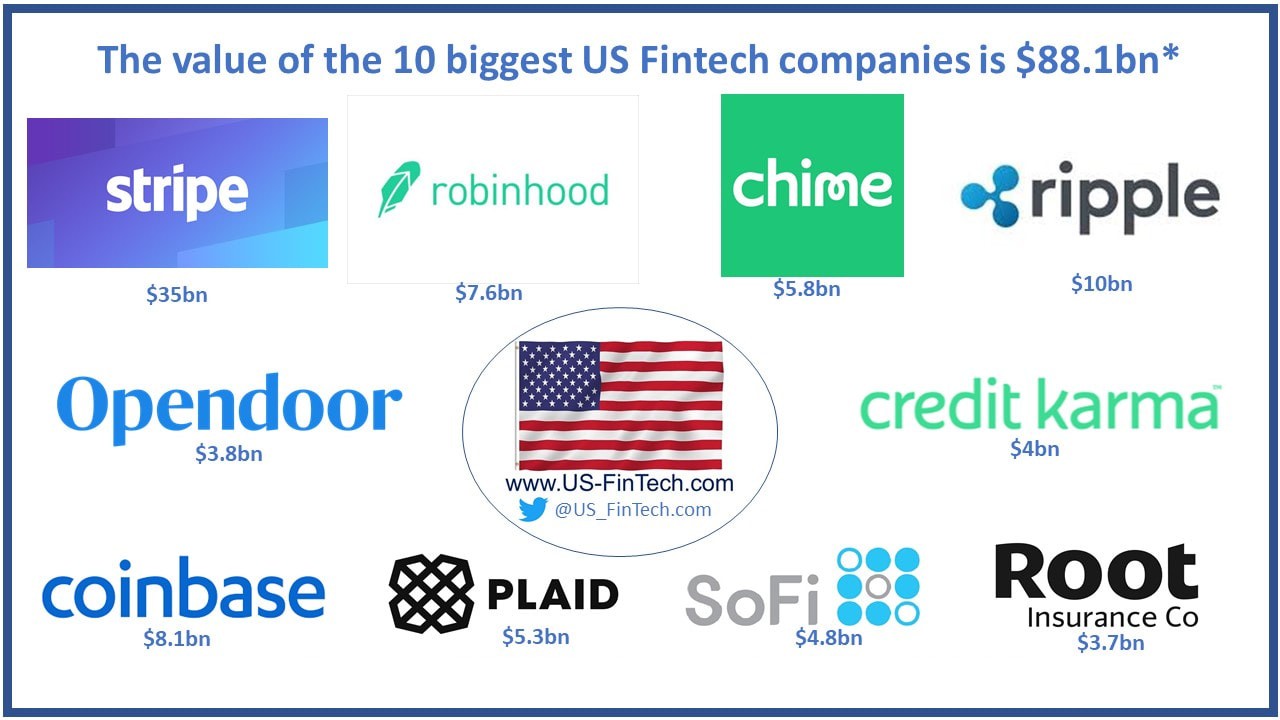Introduction
The world of cryptocurrencies has experienced significant growth and innovation since the inception of Bitcoin in 2009. As more people become aware of the potential in this digital asset class, the market continues to expand and evolve. While Bitcoin still dominates the market, there are a plethora of alternative cryptocurrencies, commonly known as altcoins, that are gaining traction.
Investors and enthusiasts are always on the lookout for the next big cryptocurrency that could replicate or even surpass the success of Bitcoin. Identifying these potential contenders requires careful evaluation of various factors, including market capitalization, technology, development team, partnerships, and tokenomics.
Understanding these factors can give us insights into which cryptocurrencies have the potential to emerge as the next biggest players in the market. However, it is important to note that the cryptocurrency market can be highly volatile and unpredictable, making it essential to exercise caution and conduct thorough research.
In this article, we will explore the factors to consider when evaluating the potential of a cryptocurrency and delve into some potential contenders for the next biggest cryptocurrency.
The Rise of Cryptocurrencies
The rise of cryptocurrencies over the past decade has been nothing short of remarkable. Bitcoin, the first decentralized cryptocurrency, introduced the world to the concept of digital currency and blockchain technology. Its groundbreaking success paved the way for the emergence of thousands of other cryptocurrencies, each with its own unique features and use cases.
Cryptocurrencies offer several advantages over traditional fiat currencies. They provide users with decentralized, secure, and transparent transactions, eliminating the need for intermediaries such as banks or governments. This has led to increased interest and adoption among individuals and businesses worldwide.
Furthermore, the decentralized nature of cryptocurrencies enables greater financial inclusivity, as anyone with internet access can participate in the cryptocurrency ecosystem. This accessibility has opened up new opportunities for individuals in unbanked or underbanked regions, who can now access financial services and participate in the global economy.
The soaring popularity of cryptocurrencies has also been fueled by the potential for high returns on investments. Many early adopters of cryptocurrencies, such as Bitcoin, have witnessed significant appreciation in their investments over time. This, combined with the growing interest from institutional investors, has further boosted the market value of cryptocurrencies.
Additionally, the emergence of blockchain technology, which underlies most cryptocurrencies, has revolutionized various industries beyond finance. Blockchain technology offers secure and transparent record-keeping, making it useful for applications such as supply chain management, healthcare, voting systems, and more.
With the rising interest and adoption of cryptocurrencies, governments and regulatory bodies around the world are also taking notice. While some countries have embraced cryptocurrencies and blockchain technology by creating favorable regulatory environments, others have imposed restrictions or expressed caution due to concerns about money laundering, fraud, and market volatility.
Despite the challenges and uncertainties, the overall trajectory of cryptocurrencies has been upward. The market has witnessed the creation of new cryptocurrencies, initial coin offerings (ICOs), decentralized finance (DeFi) platforms, and other innovative projects that aim to disrupt traditional industries.
In the next sections, we will explore the factors to consider when evaluating the potential of a cryptocurrency, and discuss some potential contenders for the next biggest cryptocurrency.
Evaluating Potential
When it comes to evaluating the potential of a cryptocurrency, there are several factors to consider. Understanding these key indicators can help investors and enthusiasts gauge the likelihood of a cryptocurrency becoming the next big player in the market.
1. Market Capitalization: Market capitalization is a crucial metric that measures the total value of a cryptocurrency. It is calculated by multiplying the current price of a coin or token by its circulating supply. Higher market capitalization typically indicates a higher level of adoption and investor confidence.
2. Technology and Use Case: The underlying technology of a cryptocurrency plays a significant role in its potential for success. Evaluating the technology behind a cryptocurrency, such as its scalability, security, and speed, can determine its ability to address real-world problems and gain widespread adoption.
3. Development Team: A cryptocurrency’s development team and their expertise are vital considerations. Experienced and reputable teams with a track record of successful projects are more likely to deliver on their promises and address challenges effectively.
4. Partnerships and Adoption: Strategic partnerships and collaborations with established organizations can significantly boost a cryptocurrency’s visibility and credibility. Integration of a cryptocurrency into existing systems or adoption by influential players in the industry can drive mainstream acceptance and usage.
5. Tokenomics and Supply: The distribution and supply of a cryptocurrency, as well as its tokenomics model, are factors to assess. A transparent tokenomics model with a fair distribution mechanism can promote a healthy ecosystem and incentivize participation.
While these factors provide a foundation for evaluating a cryptocurrency’s potential, it is important to conduct further research and remain vigilant of market trends and developments. Cryptocurrency markets are highly volatile, and the landscape can rapidly change.
In the next sections, we will discuss some potential contenders for the next biggest cryptocurrency, taking into consideration the aforementioned factors.
Factors to Consider
When evaluating the potential of a cryptocurrency, it is important to consider several factors that can provide valuable insights into its chances of becoming the next big player in the market. These factors help assess the viability, growth potential, and long-term sustainability of a cryptocurrency project.
1. Market Capitalization: Market capitalization is a key factor to consider. It reflects the overall valuation of a cryptocurrency and indicates its popularity and adoption among investors. However, it is important to note that market capitalization alone does not guarantee success, as it can be influenced by hype and speculative trading.
2. Technology and Use Case: The underlying technology and practical applications of a cryptocurrency are crucial considerations. A robust and innovative technology, such as blockchain, can enable secure transactions, smart contracts, and decentralized applications. In addition, a cryptocurrency that addresses a real-world problem and offers practical use cases is more likely to gain traction and widespread adoption.
3. Development Team: The development team behind a cryptocurrency project plays a vital role in its success. A strong and experienced team with relevant expertise and a proven track record increases confidence in the project’s execution. Regular updates, code contributions, and community engagement are indicators of an active and capable development team.
4. Partnerships and Adoption: Collaborations and partnerships with reputable organizations can significantly impact the growth and adoption of a cryptocurrency. Integration into existing platforms, as well as endorsements from industry leaders, can bring wider visibility and increase user confidence. Additionally, monitoring the level of adoption and usage by individuals, businesses, and institutions helps gauge the project’s potential for long-term success.
5. Tokenomics and Supply: The tokenomics of a cryptocurrency, including its distribution, inflation model, and use within the ecosystem, are important considerations. A well-designed tokenomics model with fair distribution encourages participation and helps maintain a healthy and sustainable network. The supply dynamics, such as maximum supply and inflation rate, also play a role in determining the future value and scarcity of the cryptocurrency.
It is important to note that evaluating these factors requires comprehensive research, understanding of the industry landscape, and staying updated with the latest developments. The cryptocurrency market is highly dynamic and subject to frequent changes, making it essential to continually assess and reevaluate the potential of cryptocurrencies.
In the next sections, we will explore some potential contenders for the next biggest cryptocurrency, taking into account the factors mentioned above.
Market Capitalization
Market capitalization is a crucial factor to consider when evaluating the potential of a cryptocurrency. It provides an indication of the overall value and popularity of a cryptocurrency within the market. Market capitalization is calculated by multiplying the current price of a coin or token by its circulating supply.
A high market capitalization implies a larger investor base and greater confidence in the cryptocurrency. It indicates that the cryptocurrency has gained significant traction and acceptance among users and investors. Higher market capitalization also suggests that the cryptocurrency has a higher likelihood of withstanding market volatility and sustaining its value over time.
However, it is important to note that market capitalization alone should not be the sole determining factor in assessing the potential of a cryptocurrency. Market capitalization can be influenced by market hype and speculative trading. Therefore, it is essential to consider other factors in conjunction with market capitalization to gain a comprehensive understanding of a cryptocurrency’s potential.
Furthermore, market capitalization can vary widely among cryptocurrencies. Bitcoin, as the largest cryptocurrency by market capitalization, sets the benchmark for other cryptocurrencies. However, smaller market capitalizations do not necessarily indicate lesser potential. Some emerging cryptocurrencies have shown significant growth potential despite their relatively small market capitalizations.
When analyzing market capitalization, it is helpful to compare the cryptocurrency’s market cap with others in the same sector or with similar use cases. It provides insights into the competitiveness of the cryptocurrency within its niche and helps determine its potential for growth and market dominance.
Additionally, monitoring the trend of a cryptocurrency’s market capitalization over time can provide valuable insights. A consistent and upward trajectory indicates sustained interest and growth, while a declining trend may signal diminishing interest or market challenges.
However, it is important to note that market capitalization alone does not guarantee the success or longevity of a cryptocurrency. It is just one piece of the puzzle when evaluating a cryptocurrency’s potential. Other factors, such as technology, adoption, development team, and partnerships, should be considered in conjunction with market capitalization to make a more informed assessment.
In the next sections, we will explore some potential contenders for the next biggest cryptocurrency, taking into account not only market capitalization but also other key factors.
Technology and Use Case
The technology and use case of a cryptocurrency are critical factors to consider when evaluating its potential. The underlying technology determines the functionality, security, scalability, and potential for innovation of a cryptocurrency. The use case, on the other hand, refers to the practical applications and benefits that the cryptocurrency offers.
A cryptocurrency built on a robust and innovative technology, such as blockchain, has the potential to disrupt traditional industries and solve real-world problems. Blockchain technology provides transparency, immutability, and decentralization, which can be advantageous in various sectors, including finance, supply chain management, healthcare, and more.
Scalability is also crucial, as it determines the cryptocurrency’s ability to handle a large number of transactions quickly and efficiently. High scalability allows for widespread adoption and usage without compromising the network’s performance.
Furthermore, security is of utmost importance for a cryptocurrency. A secure cryptocurrency minimizes the risk of hacking, fraud, and unauthorized access. Robust encryption protocols, secure storage mechanisms, and thorough auditing processes are indicators of a cryptocurrency’s commitment to maintaining a secure ecosystem.
Alongside technology, the use case of a cryptocurrency plays a significant role in its potential. A cryptocurrency must have a clear and compelling use case that addresses a real-world problem or fulfills a specific need. For instance, cryptocurrencies that facilitate cross-border payments, decentralized finance (DeFi), or provide privacy features may have broader adoption potential due to their practical applications.
When evaluating a cryptocurrency’s technology and use case, it is essential to consider the existing competition and market demand. Researching similar projects can provide insights into the cryptocurrency’s uniqueness and potential market share. Moreover, assessing whether the cryptocurrency has a working product, a viable roadmap, and an active community can help gauge its ability to deliver on its promises.
It is important to note that technology and use case are interlinked. A strong use case requires a reliable and innovative technology, while cutting-edge technology enhances the practicality and effectiveness of the use case.
Considering the technology and use case of a cryptocurrency helps investors and enthusiasts assess its potential for adoption, growth, and long-term sustainability. By examining these factors, you can gain a deeper understanding of how the cryptocurrency can bring value to its users and impact the broader ecosystem.
In the next sections, we will explore some potential contenders for the next biggest cryptocurrency, taking into account their technology and use case, among other factors.
Development Team
The development team behind a cryptocurrency project is a crucial factor to consider when assessing its potential. A strong and capable team can significantly impact the success, innovation, and execution of the project.
When evaluating the development team, it is important to consider their experience, expertise, and track record. A team with a background in blockchain technology, cryptography, software development, and relevant industries adds credibility to the project. Prior experience in successfully launching and maintaining cryptocurrency projects demonstrates the team’s ability to navigate the challenges of the industry.
Regular updates and active community engagement from the development team are additional positive indicators. Transparent communication with the community, addressing concerns and providing timely updates, fosters trust and confidence in the project. This also showcases the team’s commitment to the long-term success of the cryptocurrency.
Furthermore, evaluating the team’s vision and roadmap is essential. A clear roadmap that outlines the milestones and goals for the project indicates a well-thought-out strategy. Assessing whether the team has been able to meet their roadmap targets in the past demonstrates their ability to execute plans effectively.
Community sentiment and feedback are also valuable indicators of the development team’s performance. Monitoring the community’s reception of updates, features, and overall project progress can provide insights into the team’s ability to meet user expectations and adapt to market demands.
In addition to the core development team, it is important to consider the presence of advisors and industry experts who support the project. Advisors with experience in various domains can lend valuable guidance, strategic connections, and industry-specific insights.
Overall, a strong development team inspires confidence and adds credibility to a cryptocurrency project. Their expertise, experience, and dedication are essential for the successful execution and growth of the cryptocurrency.
It is important to note that while a strong development team is a positive factor, investing in cryptocurrencies should always come with an understanding of the associated risks. The cryptocurrency market is highly volatile, and even the most promising projects can face challenges and obstacles along the way.
In the next sections, we will discuss some potential contenders for the next biggest cryptocurrency, taking into consideration the development teams behind them along with other key factors.
Partnerships and Adoption
Partnerships and adoption play a crucial role in evaluating the potential of a cryptocurrency. Strategic partnerships with established organizations and widespread adoption are indicators of a cryptocurrency’s credibility, utility, and potential for growth.
Partnerships can enhance a cryptocurrency’s visibility and increase its user base. Collaborations with reputable businesses, financial institutions, or technology providers can open up new avenues for integration and usage. For example, partnerships that enable cryptocurrency acceptance as a payment method by major retailers or online platforms can significantly boost adoption and usage.
Furthermore, partnerships with other blockchain projects or industry-specific initiatives can drive innovation and the development of interoperable solutions. Integrating with existing systems or joining consortia can increase a cryptocurrency’s relevance and improve its chances of gaining credibility and acceptance within a specific industry.
Adoption is a key factor in assessing the potential of a cryptocurrency. The level of adoption by individuals, businesses, and institutions indicates the cryptocurrency’s practical use and real-world value. Monitoring the growth of the user base, transaction volume, and active wallets can provide insights into the cryptocurrency’s acceptance and ability to fulfill its intended purpose.
Tracking the number and quality of applications built on top of a cryptocurrency’s blockchain also showcases its potential for attracting developers and fostering innovation within its ecosystem. Successful decentralized applications (dApps) or platforms built on a cryptocurrency’s blockchain can lead to increased adoption, usage, and value for the cryptocurrency.
Moreover, regulatory acceptance and compliance are important considerations for adoption. A cryptocurrency that operates within legal frameworks and engages in regulatory discussions demonstrates its commitment to long-term sustainability. This can attract institutional investors and pave the way for wider acceptance within traditional financial systems.
Partnerships and adoption are dynamic factors that can change over time. Monitoring the progress and growth of a cryptocurrency’s partnerships and adoption metrics is essential to stay updated with its potential for future success.
However, it is important to note that partnerships and adoption alone should not be the sole criteria for evaluating a cryptocurrency’s potential. Considering other factors, such as technology, market demand, and tokenomics, in conjunction with partnerships and adoption provides a more comprehensive assessment of a cryptocurrency’s long-term prospects.
In the next sections, we will explore some potential contenders for the next biggest cryptocurrency, taking into account their partnerships, adoption, and additional key factors.
Tokenomics and Supply
Tokenomics and supply are essential factors to consider when evaluating the potential of a cryptocurrency. Tokenomics refers to the economic and financial aspects of a cryptocurrency, while supply refers to the total number of tokens in circulation and their distribution.
A well-designed tokenomics model establishes a balance between supply, demand, and utility within the cryptocurrency’s ecosystem. It includes factors such as token distribution, inflation rate, token utility, and incentives for holding or using the cryptocurrency.
Fair and transparent token distribution is crucial for building trust and ensuring a healthy ecosystem. A reasonable distribution mechanism that avoids concentration of tokens in the hands of a few entities promotes decentralization and wider participation. Examining the distribution strategy, including any initial coin offerings (ICOs) or token sales, can provide insights into the distribution process.
Token utility is another important aspect of tokenomics. Assessing how the cryptocurrency is used within its ecosystem, such as for transaction fees, staking, governance, or access to platform features, helps gauge its value and potential demand. A cryptocurrency that offers multiple avenues for utilization can drive adoption and increase its overall value.
Inflation rate and token supply dynamics are also significant considerations. Understanding the maximum supply of tokens, the rate of inflation, and any mechanisms for token burning or deflationary measures helps assess the scarcity and potential value appreciation of the cryptocurrency over time.
In addition, evaluating any rewards or incentives for holding or staking the cryptocurrency can attract long-term investors and promote network participation. It provides an incentive structure that encourages users to hold their tokens and actively contribute to the ecosystem’s growth and stability.
It is important to note that overly complex or unclear tokenomics models can introduce uncertainty and hinder the understanding of the cryptocurrency’s potential. A well-defined and easily understandable tokenomics model enhances transparency and user confidence.
Monitoring the supply and circulation of a cryptocurrency, as well as any adjustments to the tokenomics model, helps assess the project’s execution and ability to adapt to changing market conditions.
However, it is essential to remember that tokenomics and supply are just one aspect of evaluating a cryptocurrency’s potential. Considering these factors in conjunction with technology, partnerships, adoption, and the overall market landscape provides a more comprehensive understanding of a cryptocurrency’s potential for long-term success.
In the next sections, we will explore some potential contenders for the next biggest cryptocurrency, taking into account their tokenomics, supply, and other key factors.
Potential Contenders for the Next Biggest Cryptocurrency
With the understanding of the key factors to consider when evaluating the potential of a cryptocurrency, let’s explore some potential contenders for the next biggest cryptocurrency.
1. Ethereum (ETH): As the second-largest cryptocurrency by market capitalization, Ethereum has established itself as a major player in the blockchain industry. It pioneered smart contract functionality and fueled the growth of decentralized finance (DeFi) and non-fungible tokens (NFTs). With ongoing improvements such as the transition to Ethereum 2.0 and scalability solutions like layer 2 networks, Ethereum continues to position itself as a leading platform for decentralized applications.
2. Binance Coin (BNB): Binance Coin is the native cryptocurrency of the Binance exchange, one of the largest cryptocurrency exchanges globally. BNB offers various utilities within the Binance ecosystem, including reduced trading fees, participation in token sales, and DeFi applications on the Binance Smart Chain. With Binance’s strong market presence and continuous expansion into new markets and initiatives, BNB has the potential to further increase its adoption and value.
3. Cardano (ADA): Built with a focus on security, scalability, and sustainability, Cardano aims to provide a blockchain platform for the development of decentralized applications and smart contracts. With a strong development team and a peer-reviewed approach to research and innovation, Cardano has gained attention for its commitment to scientific rigour and academic exploration. Ongoing developments, such as the implementation of smart contracts through the Alonzo upgrade, position Cardano for potential growth in adoption and market capitalization.
4. Polkadot (DOT): Polkadot is a multi-chain platform that enables interoperability between different blockchains. It allows for the seamless transfer of assets, data, and applications across multiple networks. With its focus on scalability, security, and cross-chain compatibility, Polkadot has attracted attention from developers and investors. The ability to connect different blockchains and enable collaboration between them positions Polkadot as a potential contender for the next biggest cryptocurrency.
5. Solana (SOL): Solana is a high-performance blockchain platform built for decentralized applications and crypto-currencies. With its focus on scalability and fast transaction speeds, Solana has garnered attention for its ability to handle high volumes of transactions quickly and cost-effectively. The project has gained traction through partnerships and integrations across various sectors, including DeFi and NFTs. The potential for continued growth and adoption positions Solana as a potential contender in the cryptocurrency market.
It is important to note that the cryptocurrency market is highly dynamic and subject to rapid changes. While these cryptocurrencies show potential, their success depends on various factors, including market conditions, technological advancements, regulatory landscape, and user adoption.
When considering potential contenders for the next biggest cryptocurrency, it is essential to conduct thorough research, assess the factors discussed earlier, and stay updated with industry developments to make informed investment decisions.
Ethereum (ETH)
Ethereum, often referred to as the “world computer,” is one of the most prominent and established cryptocurrencies in the market today. As the second-largest cryptocurrency by market capitalization, Ethereum has gained significant recognition and adoption for its innovative features and potential for decentralized application development.
One of Ethereum’s key strengths is its support for smart contracts, which are self-executing contracts with predefined rules and conditions. This functionality has paved the way for the growth of decentralized finance (DeFi) and has made Ethereum a preferred platform for developers interested in deploying decentralized applications (dApps). Through its Turing-complete programming language, Solidity, Ethereum enables the creation of complex, trustless applications on its blockchain.
The Ethereum ecosystem has seen tremendous growth, with numerous projects and platforms built on its infrastructure. Decentralized exchanges, lending platforms, yield farms, and non-fungible token (NFT) marketplaces are just a few examples of the vibrant DeFi and NFT sectors thriving on Ethereum.
Furthermore, Ethereum has been continuously working on its scalability solution and plans to transition from a proof-of-work (PoW) consensus algorithm to a more energy-efficient proof-of-stake (PoS) consensus mechanism through the Ethereum 2.0 upgrade. This upgrade aims to address the network’s scalability challenges and reduce transaction costs, making Ethereum more accessible and sustainable in the long run.
Ethereum’s developer community is extensive and active, contributing to the ongoing research, improvement, and innovation of the platform. Regular updates, improvement proposals, and community engagement reflect the commitment of the development team to keep Ethereum at the forefront of blockchain technology.
However, Ethereum also faces challenges such as network congestion and high transaction fees during periods of high demand. This has led to the rise of other blockchain platforms that offer faster transaction speeds and lower fees.
Despite these challenges, Ethereum’s strong market presence, ecosystem, and continuous development make it a potential contender to maintain its position as one of the biggest cryptocurrencies. As the cryptocurrency market evolves, Ethereum’s ability to adapt to changing dynamics, address scalability concerns, and attract new developers and users will play a significant role in determining its future success.
It is important for investors and enthusiasts to closely monitor Ethereum’s ongoing developments and upgrades, as they have the potential to impact its adoption, market capitalization, and overall position in the cryptocurrency market.
Binance Coin (BNB)
Binance Coin (BNB) is the native cryptocurrency of the Binance exchange, one of the largest and most influential cryptocurrency exchanges globally. BNB was initially launched as an ERC-20 token on the Ethereum blockchain, but it has since transitioned to its own blockchain, known as the Binance Smart Chain (BSC).
BNB holds several utilities within the Binance ecosystem, contributing to its growing adoption and market capitalization. One of the key uses of BNB is for trading fee discounts on the Binance exchange. Users who hold BNB tokens can enjoy reduced trading fees, encouraging them to engage in trading activities on the platform.
In addition to trading fee discounts, BNB is used for participating in token sales on Binance Launchpad, the platform’s initial token offering platform. Users can use BNB to purchase tokens offered through token sales, providing a seamless and convenient way to invest in new and promising projects.
The Binance Smart Chain, on which BNB operates, has gained prominence as a blockchain platform that offers low transaction fees and high throughput. The Binance Smart Chain aims to provide an alternative for developers and users who seek fast and cost-effective transactions and decentralized applications (dApps). The compatibility of BSC with the Ethereum Virtual Machine (EVM) allows for easy migration of dApps from the Ethereum blockchain to BSC.
Binance has also been actively expanding its ecosystem beyond the exchange. BNB has found utility in various applications in the decentralized finance (DeFi) space built on top of the Binance Smart Chain. Users can access lending and borrowing platforms, decentralized exchanges, yield farming protocols, and more, using BNB as a native asset.
Moreover, Binance has been proactive in forming strategic partnerships and collaborations to further enhance the adoption and utility of BNB. Integrations with payment processors, merchant solutions, and institutional platforms have provided opportunities for BNB to be used as a medium of exchange in real-world scenarios.
The continued growth of Binance’s user base and the popularity of the Binance exchange contribute to the increasing demand for BNB. As more users join the exchange and engage in trading activities, the demand for BNB tokens for fee discounts is likely to rise, potentially boosting its market capitalization.
However, it is important to note that the success of BNB is closely tied to the overall success and reputation of the Binance exchange. Regulatory changes or security concerns that directly impact Binance could have implications for the future adoption and value of BNB.
Monitoring Binance’s developments, partnerships, and initiatives, along with market trends, regulatory landscapes, and user adoption, is crucial for staying informed about the potential growth and position of Binance Coin (BNB) in the cryptocurrency market.
Cardano (ADA)
Cardano (ADA) is a blockchain platform that aims to provide a secure, scalable, and sustainable infrastructure for the development of decentralized applications (dApps) and smart contracts. With a focus on rigorous research and a scientific approach, Cardano sets itself apart in the cryptocurrency landscape.
Cardano differentiates itself through its commitment to peer-reviewed research and academic exploration. The development team collaborates with universities and experts in various fields to ensure that the platform’s design and implementation follow a meticulous and evidence-based approach. This commitment to scientific rigor aims to create a robust and reliable foundation for the Cardano ecosystem.
One of the core features of Cardano is its layered architecture, which separates the settlement layer from the computational layer. This design allows for more flexibility, scalability, and ease of maintenance. It also enables formal verification, a process of mathematically proving the correctness of code, enhancing security and eliminating potential vulnerabilities.
Cardano operates on a proof-of-stake (PoS) consensus mechanism called Ouroboros. PoS offers energy efficiency and allows ADA token holders to participate in the consensus process and earn rewards by staking their holdings. The staking mechanism incentivizes long-term participation and fosters a more decentralized network.
Cardano’s roadmap includes the implementation of a robust governance system, allowing the community to have a voice in the platform’s development and future upgrades. Through a treasury system, stakeholders can propose and vote on improvements, funding projects that benefit the Cardano ecosystem.
As Cardano progresses in its development phases, it aims to facilitate interoperability with other blockchains. The platform intends to allow seamless communication and transfer of assets between different networks, promoting collaboration and extending the reach of decentralized applications.
With an active and engaged community, Cardano continues to attract attention and build partnerships. Collaborations with governments, academic institutions, and industry-focused organizations aim to drive adoption and utilize the Cardano blockchain for real-world use cases.
Although Cardano has made significant progress, it is important to note that it is still in its early stages of development. Some features, such as the implementation of smart contracts through the Alonzo upgrade, are yet to be fully realized. It is crucial to closely monitor the execution of the roadmap and the successful deployment of planned features.
The potential of Cardano lies in its commitment to scientific research, security, and scalability. If the platform’s vision is fully realized, Cardano has the potential to become a prominent player in the blockchain space, attracting developers, businesses, and users seeking a reliable and innovative ecosystem.
Keeping an eye on Cardano’s progress, its partnerships, community engagement, and the overall market landscape will provide valuable insights into the potential growth and positioning of Cardano (ADA) in the cryptocurrency market.
Polkadot (DOT)
Polkadot is a blockchain platform that aims to enable interoperability between different blockchains, allowing for seamless communication and transfer of assets across networks. Founded by one of the co-founders of Ethereum, Polkadot offers a unique approach to addressing the scalability and compatibility challenges that exist in the blockchain ecosystem.
At the core of Polkadot is its heterogeneous multi-chain framework, which consists of a central Relay Chain and multiple Parachains. The Relay Chain serves as the main network that coordinates and secures the entire Polkadot ecosystem, while Parachains are independent blockchains that connect to and interact with the Relay Chain.
This architecture allows for the efficient sharing of resources and information among different Parachains, enabling interoperability and fostering collaboration across different blockchains. It also enhances scalability, as multiple Parachains can process transactions simultaneously, increasing the overall network throughput.
Moreover, Polkadot’s governance model empowers token holders to participate in the decision-making process and propose upgrades or improvements to the protocol. This decentralized governance ensures that the network remains adaptable and responsive to the evolving needs of its stakeholders.
Another notable feature of Polkadot is its ability to facilitate the secure transfer of assets and data across different chains without the need for intermediaries. This opens up opportunities for various use cases, such as cross-chain token swaps, decentralized finance (DeFi) applications, and bridging different ecosystems.
Polkadot has attracted a vibrant and active community of developers, who are building unique and innovative projects on the platform. The Substrate framework, developed by Parity Technologies, simplifies the process of creating customized blockchains and enables developers to focus on their specific use cases while leveraging the interoperability and security features provided by Polkadot.
Furthermore, Polkadot has gained attention from both established organizations and emerging projects. Partnerships with industry leaders and collaborations with other blockchain projects aim to accelerate the adoption and compatibility of the Polkadot ecosystem. These partnerships also provide avenues for shared development, shared security, and the creation of interconnected networks.
While Polkadot offers promising features and potential, it is essential to recognize that the platform is still evolving. The successful deployment and utilizations of Parachains, as well as the continuous growth of the developer community and compatible projects, will play a significant role in determining Polkadot’s position as a major player in the blockchain industry.
Observing the progress of Polkadot, tracking the deployment of Parachains, monitoring strategic partnerships, and assessing market trends will provide essential insights into the future growth and positioning of Polkadot (DOT) in the cryptocurrency market.
Solana (SOL)
Solana has emerged as a high-performance blockchain platform designed for decentralized applications (dApps) and cryptocurrencies. It aims to provide fast transaction speeds, scalability, and low costs, making it an attractive option for developers and users alike.
One of Solana’s key strengths is its ability to handle high transaction volumes. The platform boasts impressive transaction speeds, processing thousands of transactions per second, thanks to its unique consensus mechanism known as Proof of History (PoH). PoH timestamps each transaction and creates a historical record, allowing for quick and efficient consensus.
Scalability is a significant focus for Solana. Its architecture, based on a combination of a decentralized network of validators and parallel processing, enables horizontal scaling. Unlike traditional sharding methods, which divide the network into smaller segments, Solana’s approach allows all validators to collectively process the entire blockchain, ensuring secure and fast transactions.
The low transaction costs of Solana make it an attractive option for developers and users. With low fees, Solana aims to provide a cost-efficient environment for running decentralized applications, facilitating broader adoption and usage.
Solana’s growing ecosystem includes a range of applications and projects built on the platform. It has gained attention in decentralized finance (DeFi) with projects such as decentralized exchanges, liquidity pools, and lending platforms. Additionally, the platform has integrated with various oracle solutions to provide reliable and up-to-date external data for dApps.
The Solana community has been actively involved in the platform’s growth. Developers are continually building and improving applications, contributing to the overall development of the ecosystem. The platform’s support for the Rust programming language and the ease of building on Solana through its developer-friendly tooling and documentation further encourages engagement from developers.
Partnerships and collaborations have also played a significant role in the expansion of Solana’s reach. Strategic alliances with established organizations and integrations with other blockchain projects have helped to broaden the platform’s capabilities and increase its visibility in the market.
While Solana has gained traction, it is important to note that it is still a relatively young platform, and challenges may arise as it continues to scale and attract more users. Monitoring the platform’s performance, handling of increased network demand, and further developments regarding security and decentralization will be essential.
Overall, Solana’s fast transaction speeds, scalability, low fees, and active community contribute to its potential as a contender in the cryptocurrency market. Ongoing developments, partnerships, and the adoption of decentralized applications will shape Solana’s future position in the blockchain industry.
Conclusion
The cryptocurrency market is dynamic and ever-evolving, with numerous contenders vying for the title of the next biggest cryptocurrency. When evaluating these potential contenders, several key factors come into play.
Market capitalization provides insights into a cryptocurrency’s popularity and adoption, while technology and use case determine its potential to address real-world problems and gain widespread acceptance. The development team’s expertise, partnerships, and adoption are crucial indicators of a cryptocurrency’s growth and future prospects. Tokenomics, supply dynamics, and the overall economic model impact the value and sustainability of a cryptocurrency.
Considering these factors, we explored potential contenders like Ethereum, which revolutionized smart contracts and decentralized applications. Binance Coin offers utility within the Binance ecosystem, while Cardano focuses on rigorous research and scientific principles. Polkadot aims to enable interoperability between blockchains, and Solana offers high performance and scalability.
It is important to note that the cryptocurrency market is highly volatile and subject to regulatory factors, technological advancements, and changing market dynamics. Evaluating potential contenders requires ongoing monitoring and assessment of developments, partnerships, and user adoption.
Investors and enthusiasts should conduct thorough research and exercise caution when investing in cryptocurrencies. Diversification, risk management, and staying well-informed about the latest market trends and regulatory changes are essential for making informed decisions.
As the cryptocurrency landscape continues to evolve, new contenders may emerge, and existing projects may evolve and adapt to market demands. By keeping a watchful eye on the factors discussed and staying informed about the latest developments, one can be better positioned to navigate the ever-changing cryptocurrency market.

























